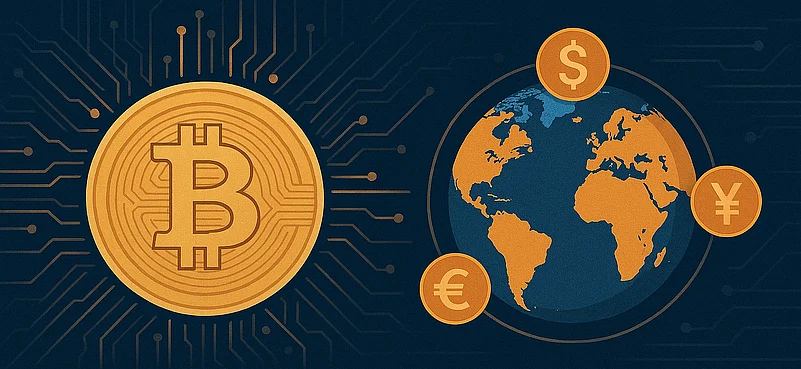Traditionally, the international financial system was entrusted to governments and central banks. Their handling of national currencies, interest rates, and determining the amount of money available excused them in dominating prize control and devising action in times of crisis reactions. But there have been signs that cryptocurrency, borderless and decentralized, built on blockchain technology, has upset this age-old order. What states could provide in the past, with such assets it is no longer an exclusive domain for policymakers. From there, a new balance of power emerges, one that can change the future of global monetary politics.
Stunted Understanding of Conventional Money Moneys
You see, how monetary policy really works, so that the roll on would shift towards the new one. Central banks, such as the Federal Reserve in the U.S. and the European Central Bank, rely on invoking interest rates and open market operations to condition inflation, employment, and economic growth; and they can either inject or withdraw money from the economy to keep an even keel.
This infrastructure has existed as the backbone to modern economies for long. So it lets governments deal with economic disasters, such as the 2008 fiasco or COVID-19, on targeted interventions.
Indulgence must be viewed as significant only when explained with urgency to build trust. Epistemologically, croton oil destroys trust between the state's interventions and the development of digital money, as intervention undermines confidence and poses distrustful questions from the public regarding the nature and quality of the institution.
The Emergence of New Currencies
Decentralized currencies like Bitcoin, Ethereum, and stablecoins are meant to be an alternative to fiat money; they are not government-issued coins but decentralized blockchain networks that validate transactions with a distributed group rather than a single governing body.
Cryptocurrencies were originally dismissed as fringe experiments or speculative assets, born into a market that has now grown into a multitrillion-dollar behemoth. Adoption as investment vehicles and means of payment has steadily gained traction, and financial institutions and regulators worldwide have had their sights set on them.
This facility to challenge established systems of operation, especially through the freeing of transfer and receipt of currencies across borders with maximum convenience and often independently of traditional banking systems, spells disruption for central banks. In countries where local currency has considerable weakness or where the people distrust financial institutions, the authority of the central banks becomes directly under the challenge.
The Shift in Power and Its Implications
Shifting power proves momentous. This new financial ecosystem does not just compete with traditional systems; it bypasses them altogether. This presents an opportunity as well as a risk:
This may weaken the effectiveness of monetary policy: If cryptocurrencies are widely adopted by a substantial part of the economy, the central banks may find it exceedingly difficult to manage inflation, capital movement, or boost the economy. Their traditional tools will be rendered ineffective.
Becoming hassle-free international transactions: Cryptocurrency is enabling rapid and inexpensive transfer overseas. While such cooperation facilitates global trade or remittance transactions, it becomes problematic for capital control, tax enforcement, and anti-money laundering programs.
Currency Substitution in Economies at Risk: In nations with currencies that are highly unstable or hyperventilated, people usually sought substitutes, like the American dollar. Now cryptocurrencies come as new substitutes. This phenomenon is often referred to as cryptozation, which will totally overthrow any central bank role.
Establishment of Central Bank Digital Currencies (CBDCs): So many countries have been inspired to develop their own currencies in the digital form. Such CBDCs are state-issued digital assets designed to combine the speed and security of some aspects of crypto with the credibility that the central banks have provided. Examples of such countries include China, India, and the European Union, all of which are testing their currencies digitally.
Control: New Battle Ground
The emergence of cryptocurrencies as forces has kept governments guessing on whether to regulate them at all or do it in such a way that innovations are not stifled. While some nations have adopted the technology partially through legal frameworks to allow it to grow, there have been some outright bans or restrictions, all of which put risks to financial stability, investor protection, and sovereignty.
The key challenge will be to find the point of perfect equilibrium for innovation and regulation. Overregulation, by this definition, will push crypto marketplace activities underground or offshore. Too little regulation, however, will result in the instability, scams, and public mistrust in both crypto and traditional finance.
International cooperation will be very important in this respect. Since cryptocurrencies are crossing borders, their regulatory approach will not serve the purpose of preventing cross-border risks from spreading.
Future Prospects: Harmony or Conflict?
Might the crypto and fiat monetary systems some day join each other, or are they set on a collision course? They envisage a future in hybrid forms: central bank-issued assets on the blockchain coexisting alongside decentralized currencies. Others predict that the transformation would be sharper: central banks would no longer matter for much, particularly for the new-generation, which prefers autonomy, transparency, and global mobility, considering all these obsolete.
No matter whose prediction emerges victorious, there is one clear fact: that crypto has redefined the terrain of monetary authority. On one's own account, business, or government adapting choices today will shape tomorrow's financial architecture. In the unfolding tale of money, technology, and power, we all do take part.














